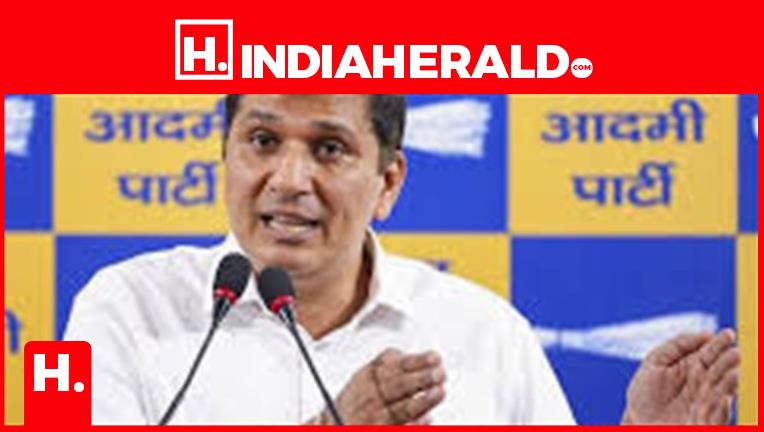Campaign Tactics: What's Changed in Contemporary Elections

Contemporary elections are a captivating environment as established norms clashes with modernity, and novel participants arise to redefine the political landscape. As we prepare to the forthcoming electoral period, it’s obvious that the strategies and strategies employed by candidates and their organizations have changed substantially. Voters are not anymore moved solely by political ties; rather, they are progressively drawn to independent candidates and innovative figures who contest the existing system. The rise of nonpartisan candidates indicates a likely shift in political allegiance, causing both traditional parties to rethink their methods.
With the impending arrival to the 2025 vote underway, numerous crucial topics are already emerging. From the influence of the youth vote to the issues of false information, and the persistent discussions about democracy's strength, these factors will play an essential role in shaping the prospects of American politics. As Idaho legislature increases over political deadlock and gerrymandering, the question remains: will we witness a true transformation in how the electoral process is navigated? This piece investigates these changing tactics and looks into the wider impacts for political governance, public participation, and the well-being of the democratic system in our nation.
The Rise of Independent Voters
In recent years, the political landscape in the United States has witnessed a substantial shift with the rise of independent voters. This demographic, which includes citizens who do n't align strictly with either major party, is expanding rapidly and has become a power to be reckoned with in elections. The upcoming election cycle is projected to see these voters play a pivotal role, as they typically sway the outcomes in swing states. Their rising presence highlights a shift in public sentiment, as many Americans express discontent with the traditional two-party system.
The trend towards independence is more than a passing phase. Polls indicate that a considerable segment of the electorate considers themselves as independent, reflecting a desire for alternative solutions to complicated political issues. This shift has prompted candidates to adapt their campaign strategies, focusing on issues that resonate with this diverse group rather than relying solely on party loyalty. As we move closer to the forthcoming elections, grasping the motivations and preferences of independent voters will be vital for any candidate hoping to succeed.

Furthermore, the implications of this rise extend beyond voter demographics. Political parties are rethinking their platforms to attract these independent voters, frequently leading to more centrist positions. This development raises questions about the future of partisanship and whether it can persist in an progressively fragmented political environment. As the campaign unfolds, both major parties will need to consider how to interact with this important voting bloc, which could potentially determine the direction of American politics in the years to come.
Power Struggles in Washington
Political dynamics in Washington are changing, with new power players arising and existing coalitions being tested. As nonaffiliated voters rise in appeal, they confront the established two-party system, pressuring both Democrats and Republicans to rethink their strategies. This transition has significant implications for future electoral battles as candidates vie for the critical segment of unaffiliated voters, which could decide the result in critical areas.
In Congress, odd alliances are emerging, with members bridging divides to tackle critical concerns such as changes to immigration laws and environmental issues. These unlikely partners emphasize a increasing readiness among some lawmakers to favor bipartisan solutions over party allegiance. However, this trend can also result in internal conflict, as sections within parties grapple with divergent views, potentially impeding legislative advancements on important projects.
Moreover, with the upcoming 2025 election looming, the competitive landscape is further complicated by accusations of election interference and disinformation efforts. Candidates for office are increasingly focused on shielding their communications and disputing false narratives. Learn more increased examination around elections is influencing both campaign strategies and citizen participation, as the voting public calls for transparency from their representatives amidst swirling rumors and media speculation.
The Young Vote's Impact
The upcoming election is shaping up to be a pivotal moment for the young electorate, which has increasingly become a significant influence in determining election results. The youth have shown their capacity to mobilize and influence critical issues such as environmental issues, education reform, and equity. With a growing sense of importance around these topics, candidates are adapting their platforms to resonate with this demographic, recognizing that their engagement can tip the balance in battleground areas.
The rise of social media as a primary means of communication has changed how political communications are spread and consumed among the youth. Campaigns are now designed with an awareness that trending topics can significantly enhance engagement and impact. Innovative strategies, such as partnering with influential online personalities or utilizing interactive media, are increasingly common as candidates seek to capture the attention of younger constituents who are often skeptical of conventional political messaging.
Moreover, the youth vote represents a threat to established political standards. As younger voters express their choices for candidates who embody progressive ideals and a disdain of the status quo, they are forcing both major parties to reassess their strategies. The likelihood for high voter turnout among this group in 2025 could lead to significant shifts in legislative priorities, making it crucial for political leaders to address the needs and hopes of the next generation.
